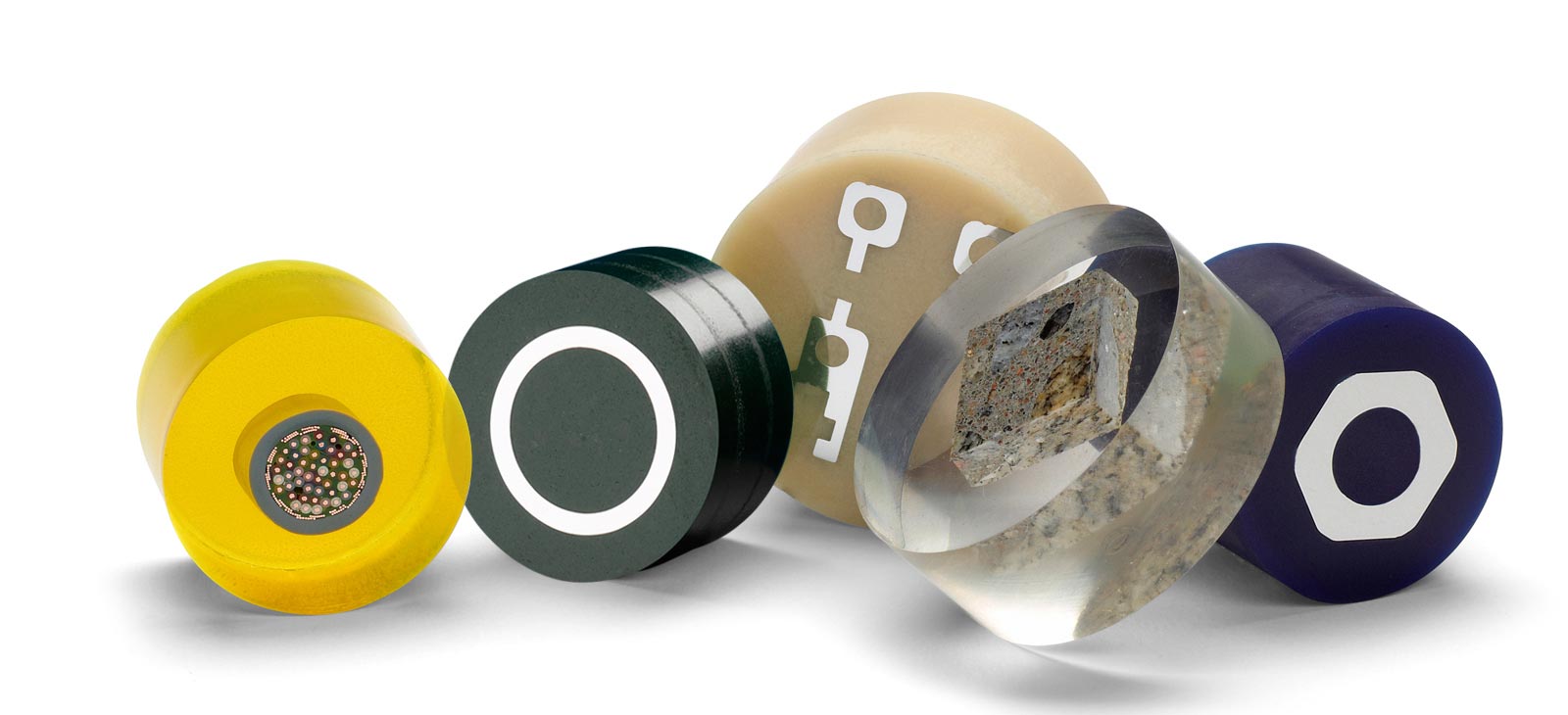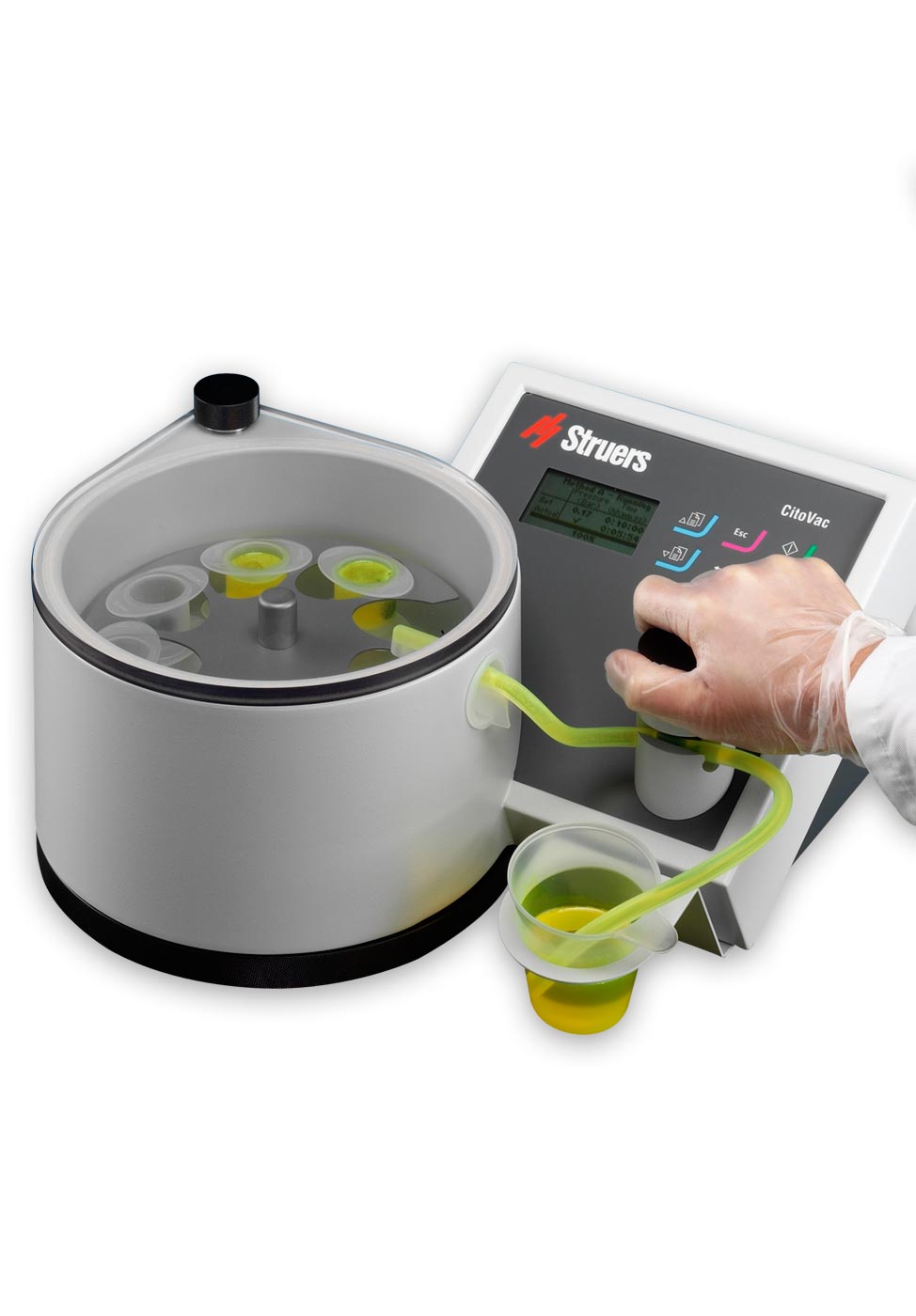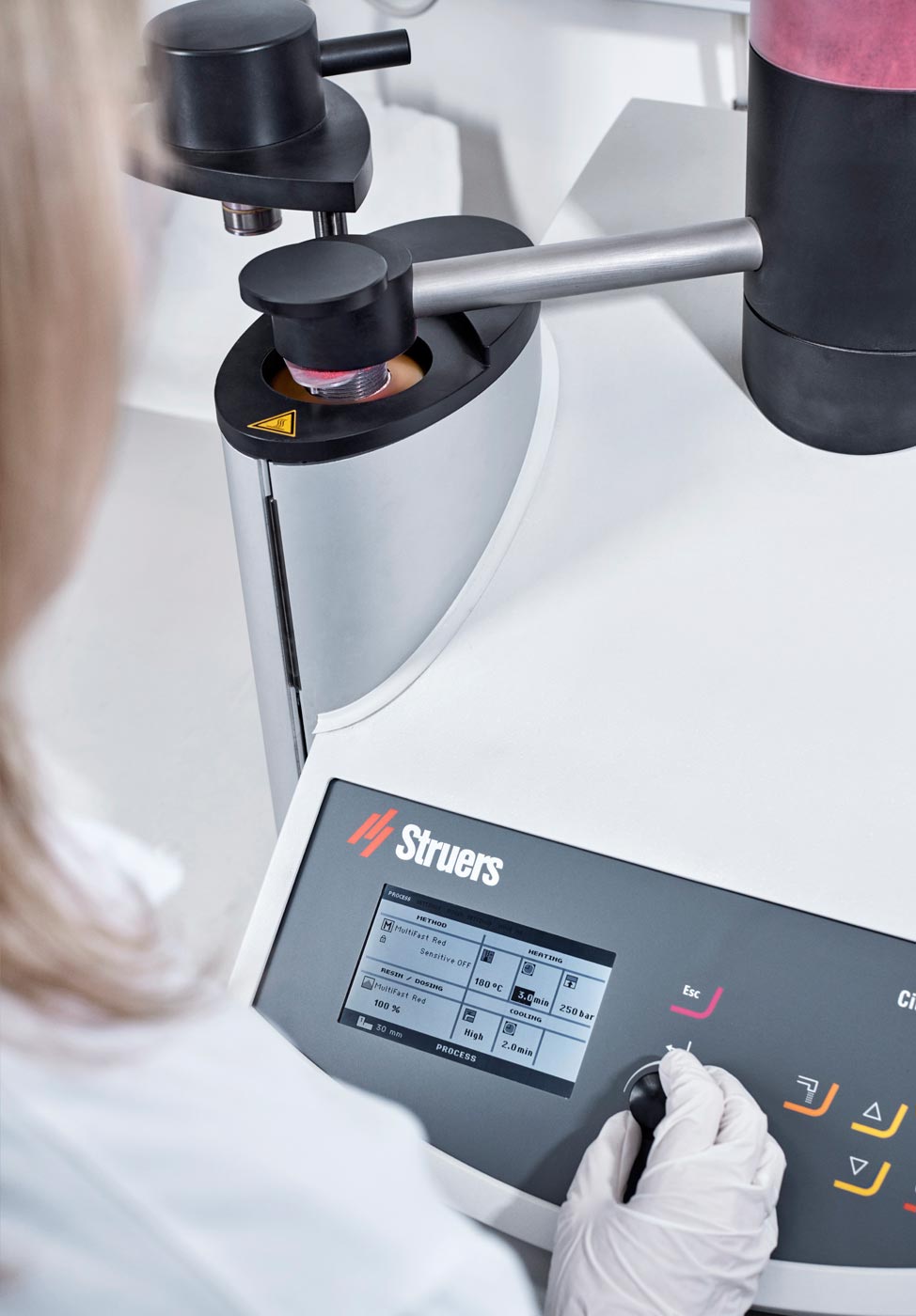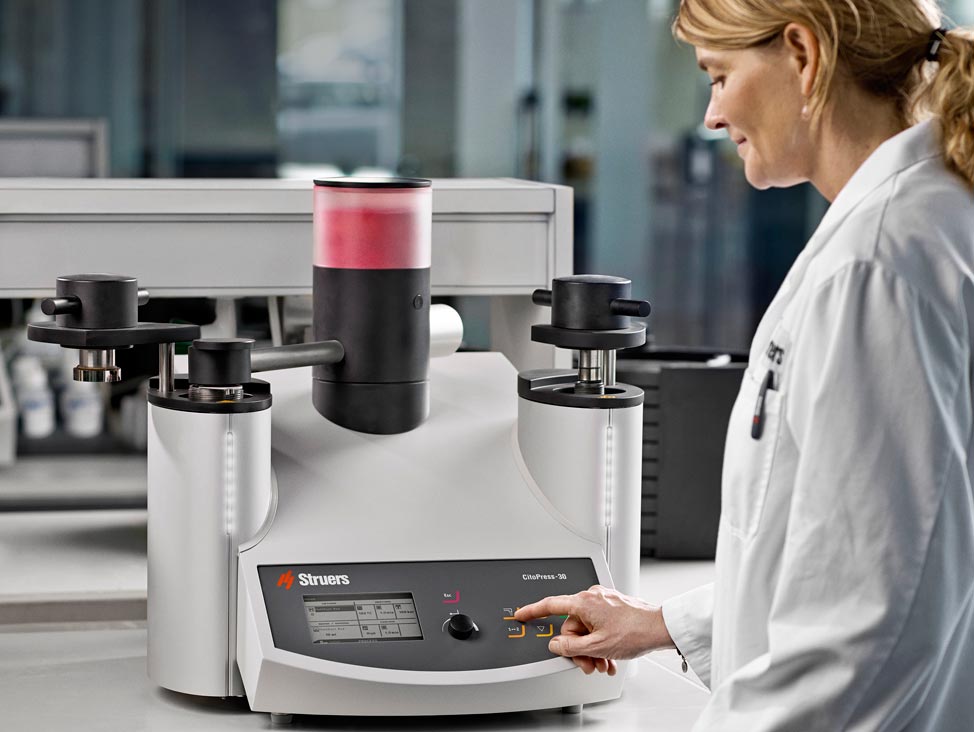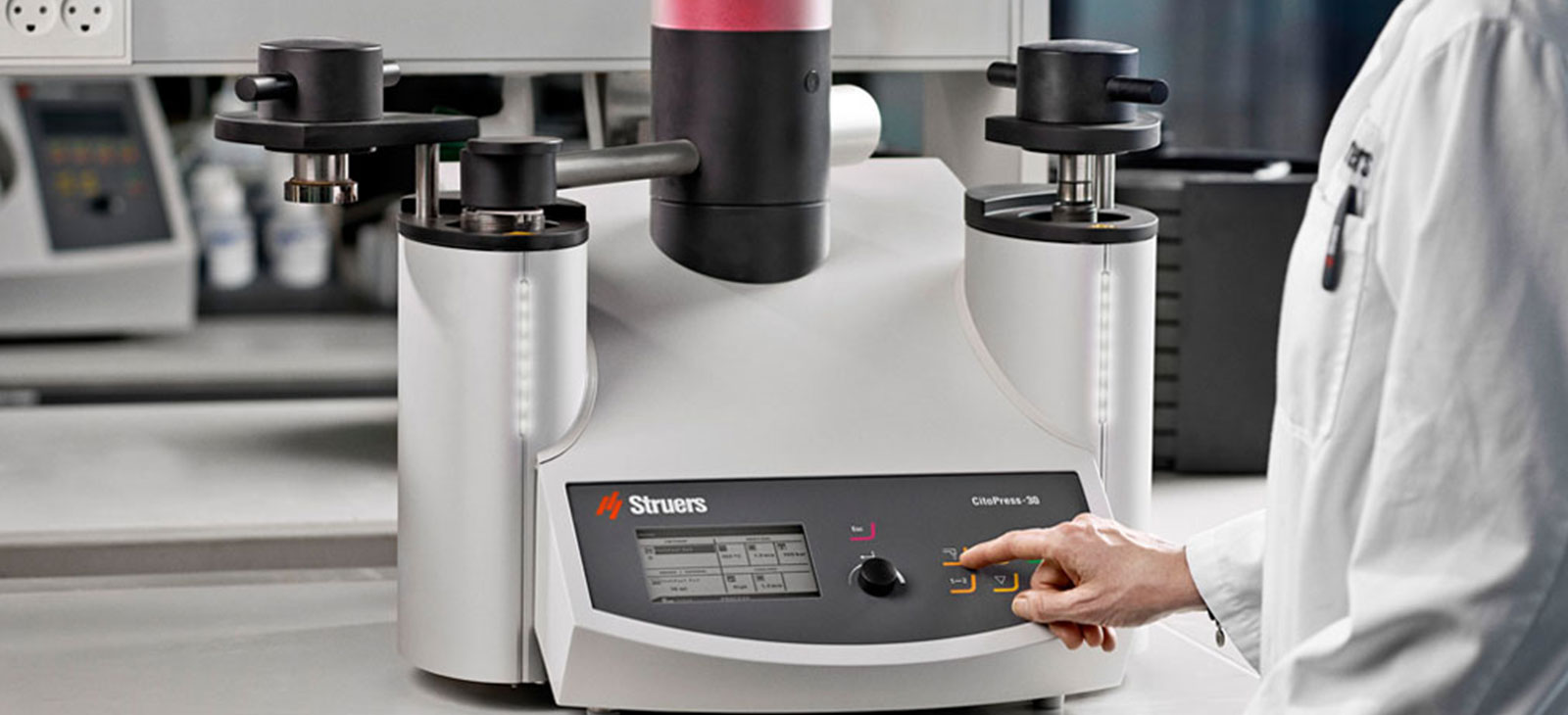The best possible result
Specimens are embedded in resin to facilitate their handling and to improve the preparation result. For the best possible result, specimens should be cleaned prior to mounting. The best possible adhesion of resin to the specimen requires the surface to be free from grease and other contaminants.
Specimens that need perfect edge retention or protection of layers require mounting. However, it is worth considering whether the size or geometry of the specimen would make mounting unnecessary or even difficult. If this is the case, it might be better not to mount it.
Another consideration is whether or not the specimen can tolerate heat. If not, it is advised to refrain from using a mounting method that is likely to heat the specimen. Finally, consider that time can be saved by not mounting the specimen.

